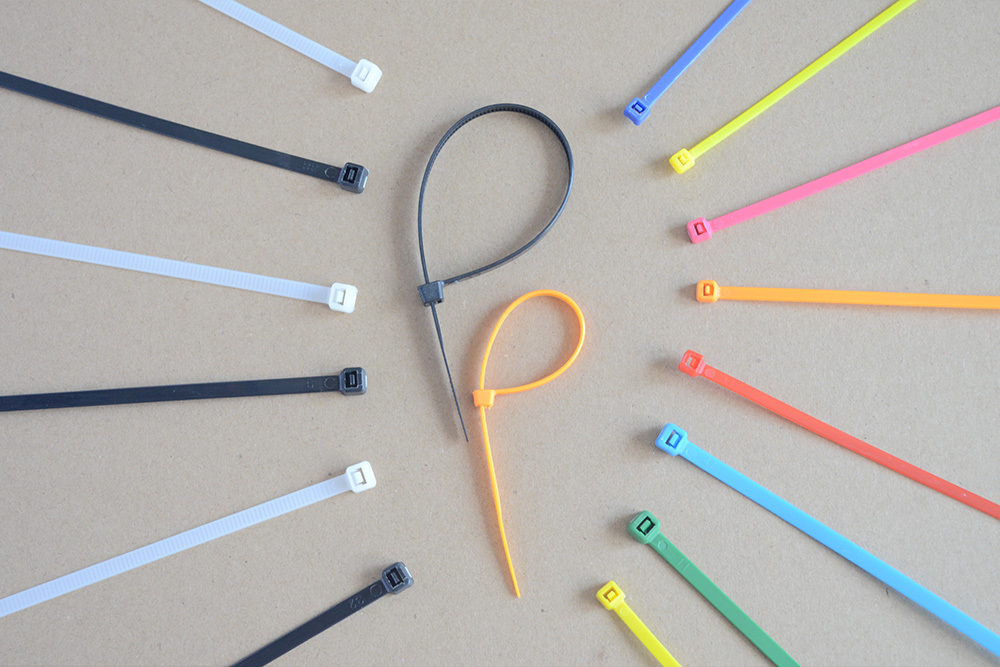10
2025
-
07
Storage precautions for plastic cable ties
Author:
Optimal Storage Conditions for Plastic Cable Ties: Ensuring Longevity and Performance
Plastic cable ties, while durable, require specific storage conditions to maintain their structural integrity and functionality over time. Improper storage can lead to material degradation, reduced tensile strength, or even brittleness, compromising their reliability in critical applications. Below are key considerations for storing plastic cable ties effectively.
Temperature Control: Avoid Extremes
Plastic cable ties are sensitive to temperature fluctuations. Exposure to high temperatures, such as those near heaters, boilers, or direct sunlight, can cause thermal degradation. This process alters the molecular structure of the nylon or polyamide material, leading to softening, deformation, or reduced tensile strength. Conversely, storing ties in excessively cold environments, such as unheated warehouses during winter, may cause the material to become brittle, increasing the risk of cracking under stress.
The ideal storage temperature range for most plastic cable ties is between -10°C (14°F) and 35°C (95°F). For long-term storage, maintaining a stable room temperature around 20–25°C (68–77°F) is optimal. Avoid placing ties near heat sources or in areas prone to temperature swings, such as garages or outdoor sheds.
Humidity Management: Prevent Moisture Damage
Nylon, a common material in plastic cable ties, is hygroscopic—meaning it absorbs moisture from the environment. While moderate humidity can slightly improve flexibility, excessive moisture absorption can weaken the material over time. High humidity levels (above 60%) may also promote mold growth or corrosion in metal components of hybrid ties. On the other hand, extremely low humidity (below 20%) can lead to static buildup, attracting dust and particles that may scratch or damage the ties.
To maintain balance, store cable ties in an environment with relative humidity between 30% and 50%. Use dehumidifiers in damp areas or humidifiers in overly dry spaces to regulate moisture levels. If storing ties in bulk, consider placing desiccant packets inside sealed containers to absorb excess moisture.
Light Exposure: Shield from UV Rays
Prolonged exposure to ultraviolet (UV) light is one of the most damaging factors for plastic cable ties. UV radiation breaks down the polymer chains in nylon, causing discoloration (yellowing or browning), embrittlement, and a significant drop in tensile strength. This is particularly critical for ties stored outdoors or near windows, where sunlight can directly penetrate packaging.
To protect ties from UV damage:
- Store them in opaque, airtight containers or bags to block light.
- Avoid transparent packaging unless the ties are specifically rated for UV resistance.
- If ties must be stored in well-lit areas, rotate stock frequently to minimize exposure time.
Physical Protection: Avoid Mechanical Stress
Plastic cable ties can suffer from physical damage even in storage. Stacking heavy objects on top of tied bundles or placing them in cramped spaces where they may bend or twist can lead to permanent deformation. Sharp edges or abrasive surfaces may also scratch or weaken the material, reducing its load-bearing capacity.
To prevent mechanical stress:
- Store ties flat or upright in dedicated racks or bins to maintain their shape.
- Avoid overcrowding storage areas; ensure ties have ample space to prevent compression.
- Handle ties with care during inventory checks, avoiding rough pulling or bending.
Chemical Isolation: Keep Away from Contaminants
Certain chemicals can react with the nylon or polyamide material in plastic cable ties, causing discoloration, swelling, or embrittlement. Common culprits include solvents (e.g., acetone, alcohol), acids, bases, and oils. Even residual chemicals from nearby storage items, such as cleaning supplies or industrial lubricants, can pose a risk through vapor transmission.
To ensure chemical safety:
- Store ties in a dedicated area away from potential contaminants.
- Use sealed containers or bags to create a barrier against vapor infiltration.
- If ties come into contact with chemicals accidentally, discard them immediately to avoid compromised performance.
Inventory Rotation: Follow First-In, First-Out (FIFO)
While plastic cable ties do not have a strict expiration date, their performance can degrade over time, especially if stored improperly. To minimize waste and ensure reliability, adopt a first-in, first-out (FIFO) inventory system. This practice ensures older stock is used before newer batches, reducing the likelihood of ties sitting unused for extended periods.
Additionally, label storage containers with purchase dates and batch numbers to track age and quality. Regularly inspect ties for signs of degradation, such as discoloration, cracking, or reduced flexibility, and discard any that fail quality checks.
By adhering to these storage guidelines, users can extend the lifespan of plastic cable ties and ensure they perform reliably when needed. Proper temperature control, humidity management, light protection, and physical and chemical safeguards are essential for maintaining the material’s strength and durability.
plastic cable ties
Previous Page
Hot News
2025-07-11
How many years can plastic cable ties be used?
Plastic cable ties, while designed for durability, have a service life that varies significantly based on environmental conditions, material quality, and application demands. Understanding these factors helps users optimize their usage and anticipate replacement timelines.
2025-07-11
Introduction to the features of plastic cable ties
Plastic cable ties, also known as zip ties, are ubiquitous tools valued for their simplicity and effectiveness in securing objects.
2025-07-10
Storage precautions for plastic cable ties
While plastic cable ties do not have a strict expiration date, their performance can degrade over time, especially if stored improperly. To minimize waste and ensure reliability, adopt a first-in, first-out (FIFO) inventory system. This practice ensures older stock is used before newer batches, reducing the likelihood of ties sitting unused for extended periods.
2025-07-10
Introduction to the advantages of plastic cable ties
The Multifaceted Advantages of Plastic Cable Ties: From Industrial Strength to Everyday Innovation

